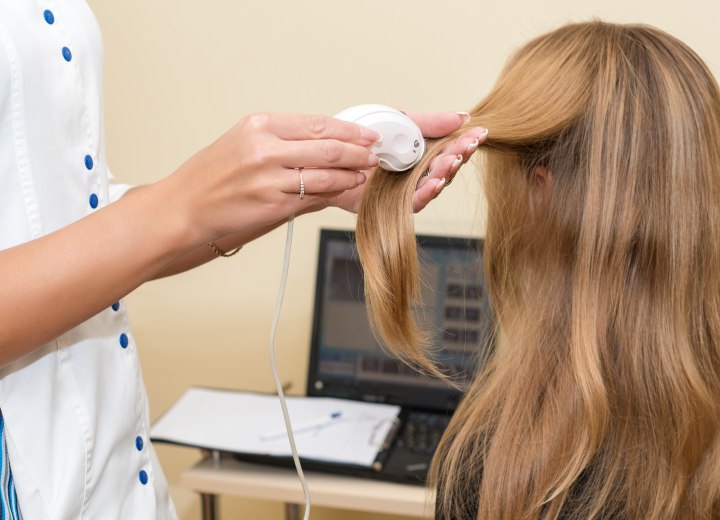Beaded Hair

My mom at the time did not think to ask what it meant because she was too taken aback by how interested everyone was with my daughter’s hair. My question is what does veeted hair mean? I hope you can help me out because I am very curious to know what it means.
A: I think your mother may have misunderstood the term used, or else the stylist misspoke about the condition your daughter has. Not being able to actually see your daughter’s hair to identify the condition in question, I can’t possibly make a diagnosis, but the only condition I know of that even remotely sounds like “veeted” hair is “beaded hair”, also known as monilethrix.
Because the hair follicles grow independently of one another, the presence of beaded hair can be very sparse or clustered in specific areas of the scalp. The condition is shown to be a dominant genetic trait passed from generation to generation in varying degrees of severity. In cases needing treatments, retinoic and glycolic acids are applied topically. Minoxidil is used in postpubescent patients. The condition tends to improve over the years.
Unless the hairs are so prevalent that they are causing hair loss in the child or begin to develop more over the years, there’s really no cause for concern. The condition is not health-threatening and poses not cause for worry. There has been no connection to any other conditions and it is a singular problem that doesn’t mean there is anything else that is wrong.
As I’ve stated before, I’ve never seen the child’s hair so cannot identify whether it might be beaded hair or not. And only a doctor has access to the necessary equipment to make a positive determination, diagnosis or to prescribe treatment if necessary. However again, there is no need for alarm or worry, and many people have this condition and have only minimal problems from it and none that are health related. Many who have childhood problems find that the problem abates of its own accord. However, please contact your family doctor if you have any concerns or further questions.
©Hairfinder.com
See also:
Hair loss
Hair problems
Hair diseases